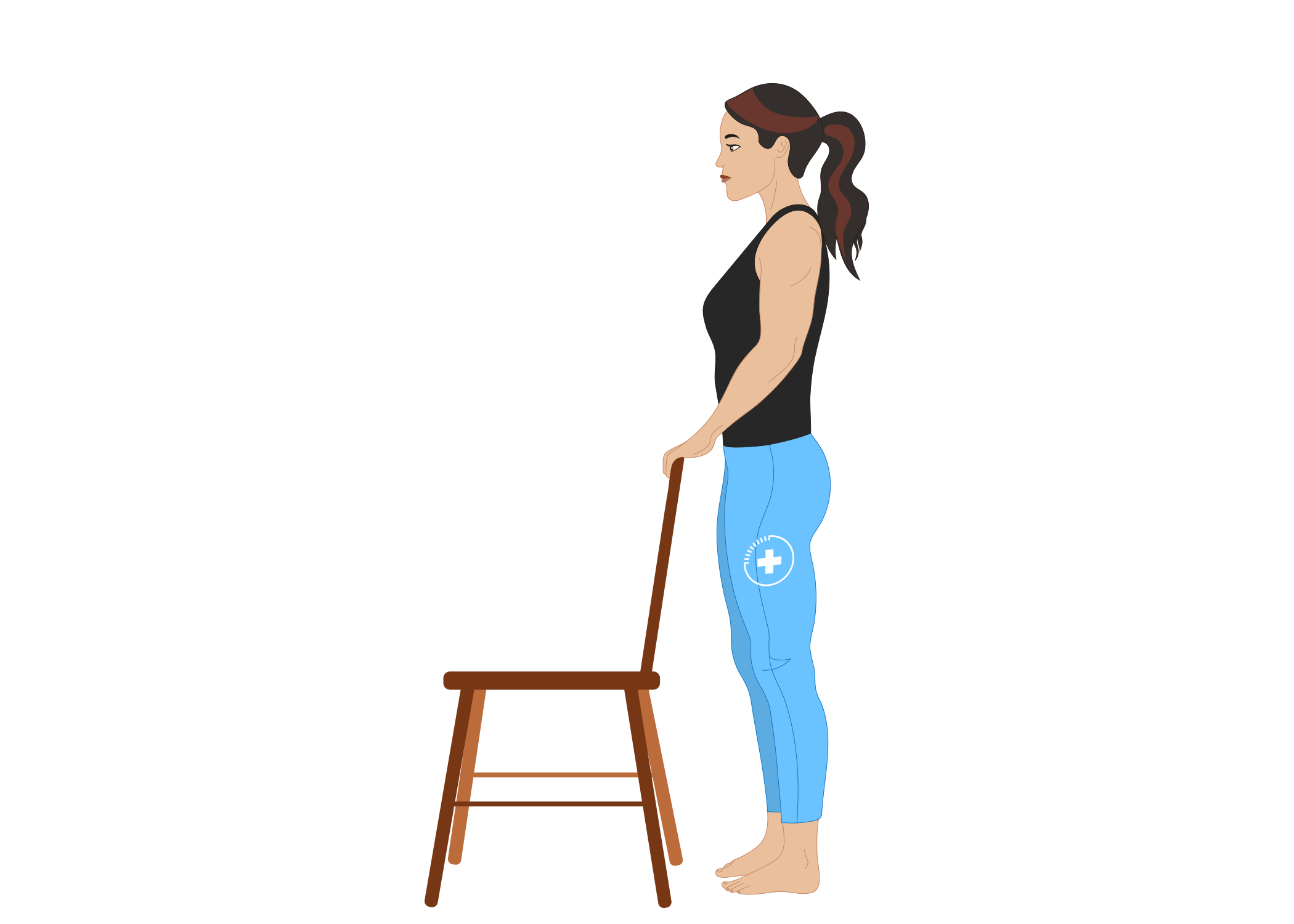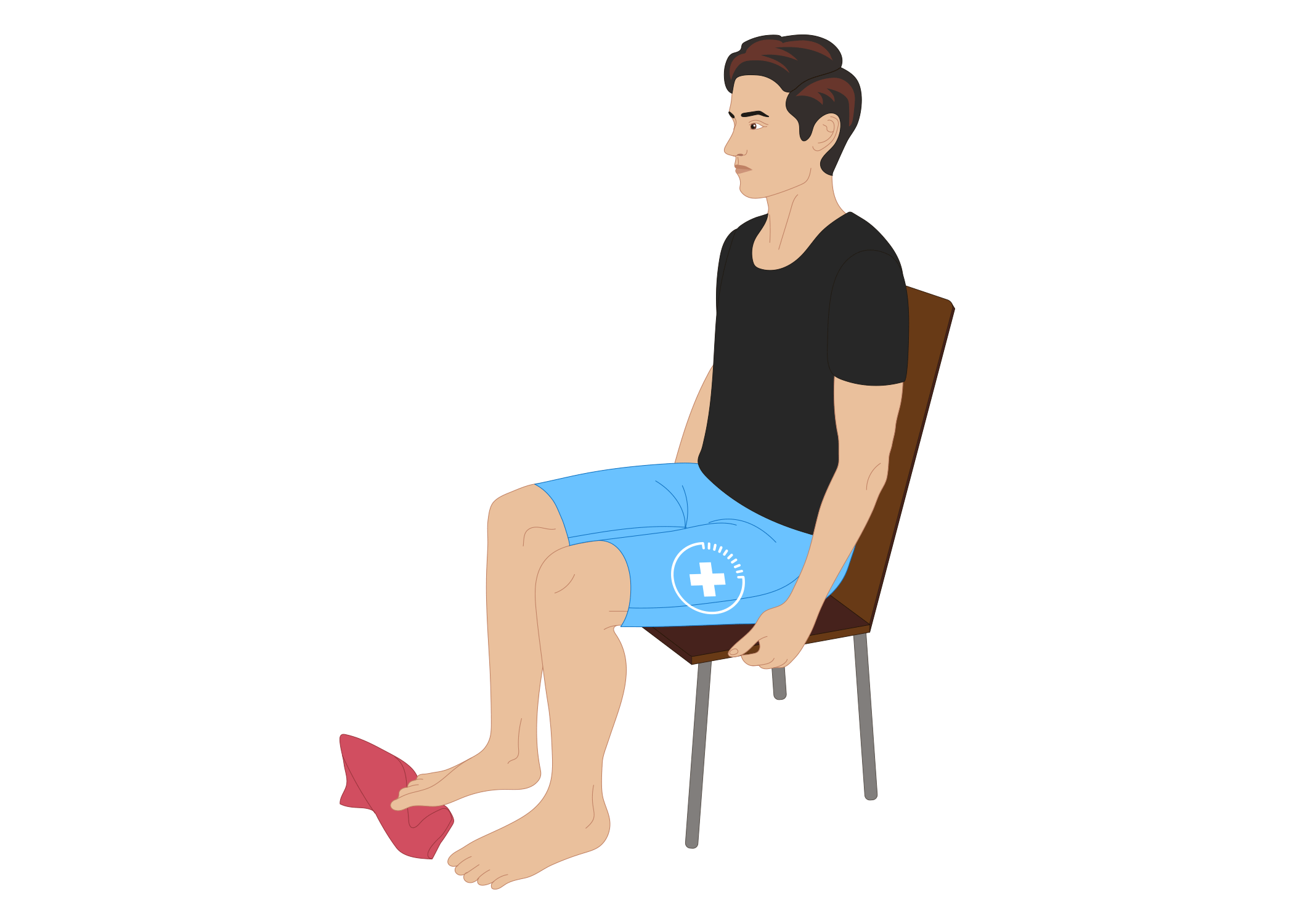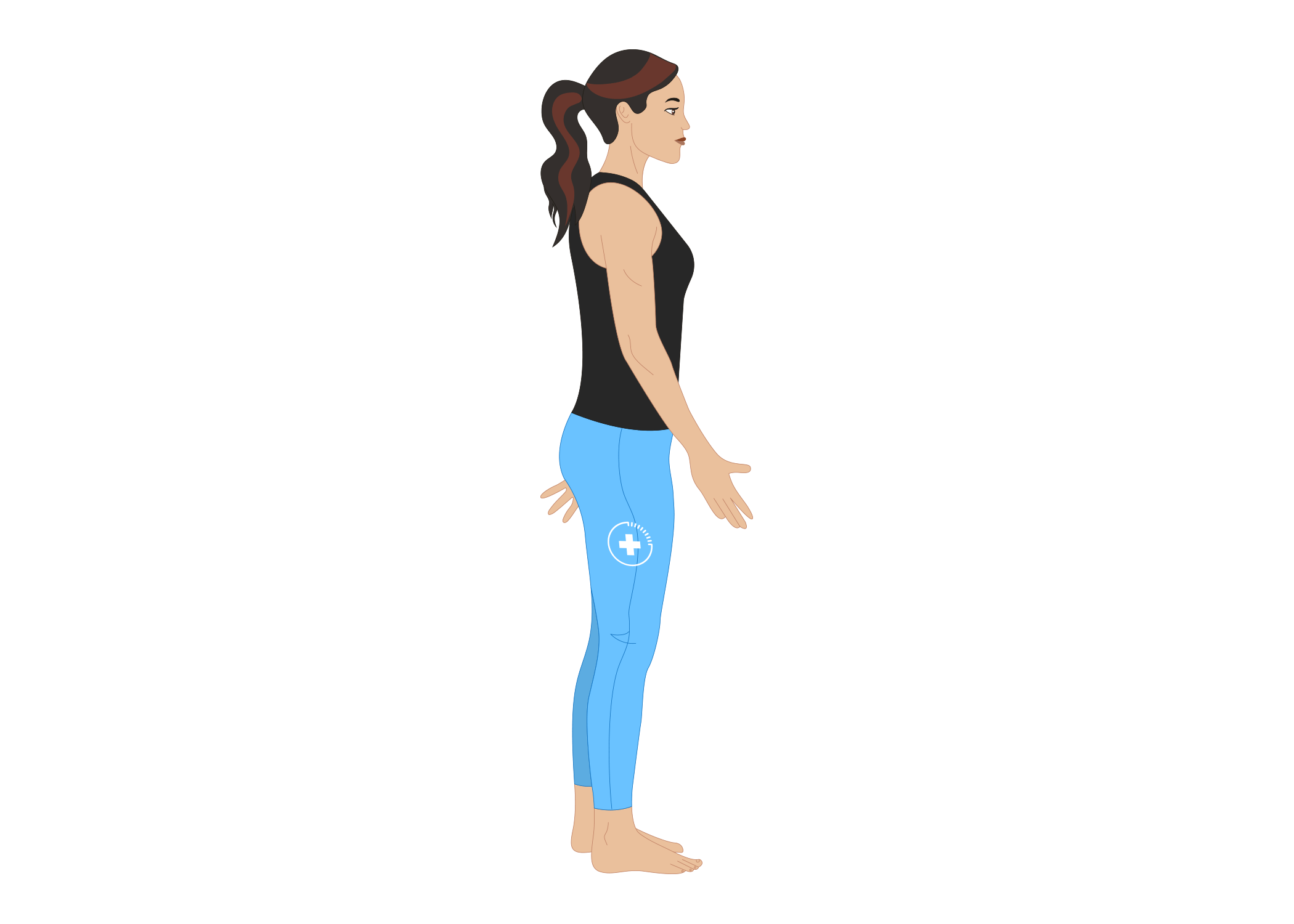Living with plantar fasciitis pain can be a challenge. As a sports medicine doctor, I see a lot of patients who experience heel inflammation and pain.
I can definitely relate to their struggle. Because I’m on my feet all day at work, I also suffer from foot pain.
To help my patients (and myself), I put together a list of my favorite plantar fasciitis stretches and exercises. You can download a PDF here.
That’s why I created a simple, step-by-step plan you can follow right from your phone. The workouts take just minutes a day—and they’re part of the same approach I use with patients in my clinic.
The 28-day plantar fasciitis protocol is included inside the Sporty Doctor app. Each session is simple, effective, and takes around 10–12 minutes a day. You’ll also get strategic recovery days with ice, mobility, and tissue release built right in. You can try it free for 7 days—and if it doesn’t help, you’re covered by a 30-day money-back guarantee. No pressure, just results.
Fortunately, there are many steps you can take to help heal your body, including this list of home remedies. For example, you might try self-massage techniques, supportive shoe inserts, or a night splint. You might also look into buying a pair of PF socks–you can check out my sock recommendations here. You can read more about the symptoms and causes of plantar fasciitis and bone spurs from the American Academy of Orthopaedic Surgeons.
However, I absolutely believe physical therapy is key to reducing heel pain. Research from Mayo Clinic also confirms this. Now let’s explore how to treat plantar fasciitis quickly and naturally, without having to visit a physical therapist. All off these exercises have been medically reviewed by myself and other medical professionals.
Seated Towel Calf Stretch
Think of this towel stretch as a reset button for your lower legs. When the calf muscles stay shortened, it triggers a chain reaction—tugging on your Achilles, irritating your plantar fascia, and making every step feel more fragile. The seated towel calf stretch counters that. It’s a simple, low-effort move that creates a deep release where you need it most.

As you might already know, tight calves also contribute to plantar fasciitis pain. In particular, a tight achilles tendon, which connects your calf to your foot, can be a cause of pain. The towel calf stretch is one of many on the list that targets your calf muscles as well as those in your feet.
That’s why this stretch isn’t just about short-term relief—it’s about prevention, too. By consistently releasing tension in your calves and fascia, you help retrain how your foot absorbs impact. Over time, this can improve how you walk, reduce flare-ups, and protect you from setbacks that often come with skipping recovery work.
Prone Leg Lifts
Prone leg lifts targets your hips and pelvis. Building strength in this area is crucial to preventing PF pain.What does foot pain have to do with your hips? Well, if you have a weak gluteus medius, the muscle along the side of the pelvis, your body begins to tilt inward. This places excess pressure on your inner foot, a.k.a. your arch. Excess weight on the arches can cause them to fall. It can also damage the plantar fascia. So let’s work to prevent that from happening!

This move targets your glutes and core, training them to support your lower body with more stability. Keep your back neutral and focus on lifting with control, not momentum. You’re not chasing big movement—you’re rebuilding your foundation. It’s not about flair—it’s about undeniable, functional strength that helps your body move well. In the long game of injury prevention, these small lifts carry serious weight.
Frozen Water Bottle Rolls
Some relief techniques just resonate with your body—and this is one of them. Rolling a frozen water bottle under your foot does more than just cool down inflammation. It delivers a soft-tissue massage that helps reset your plantar fascia and ease the throbbing discomfort that builds throughout the day.

The key here is consistency and patience. This isn’t a time to attack the pain—let the cold and motion work together. Just a few minutes can have a sweeping calming effect, especially if you’ve been on your feet for hours. Done right, it’s not just a physical release—it’s a chance to reconnect with your body in a moment of chill recovery.
Wall Calf Stretch
You already know that tight calves contribute to foot pain. But did you know that one of the top causes of calf tightness is sitting? Think about how time you spend sitting each day. At the office, in the car, watching Netflix, eating dinner. It’s probably hours and hours. Calf stretching exercises are great for plantar fasciitis pain.

Lean into the stretch, heel grounded, and feel the tension give way slowly. Avoid bouncing or turning the foot outward—this is about alignment and control. With time, this stretch becomes more than routine; it becomes a tool you depend on to help restore balance to your stride and create space for healing.
Sideways Leg Lifts
Sideways leg lifts may not scream “foot recovery,” but the connection is real—and critical. Strong hips help maintain knee and ankle alignment, which in turn supports your arch. When your glute medius is asleep, your foot is forced to overwork and suffer.

This move builds strength in the outer hips and retrains how your leg supports you with each step. It’s not about how high you lift—it’s about precision. Keep your core steady and your hips from rolling. Done right, this quiet movement can transform your gait from the top down. You’ll not only protect your foot—you’ll reclaim a stronger, more alive stride.
Crossover Fascia Stretch
That deep, tight ache in your arch when you first stand up? This stretch is designed to soften it. The crossover fascia stretch targets the plantar fascia directly, helping to create more flexibility and flow in a zone that’s often stuck in a tight, irritated state.

Sit down, cross your leg, and gently draw your toes back. No need to tweak or force it. Let your breath guide you. This isn’t about instant results—it’s about creating space over time. When woven into your daily rhythm, it becomes a protective ritual that reminds your body it’s safe to move again.
Standing Calf Raise With Chair
Every step you take depends on your calves—whether you notice them or not. These muscles are the unsung heroes of foot stability, helping you conquer stairs, walks, and workouts. When they’re weak, your foot bears the brunt of every impact.

Calf raises help restore that strength. Using a chair for support, lift slowly and lower with control. You’re not rushing—you’re teaching your body how to glide again. This move activates not only the calves but the small, stabilizing muscles in your feet. Over time, that leads to a stronger arch and a healthier, more stable push-off. Don’t just go through the motions—feel each rep as a message to your fascia: we’ve got this.
Towel Toe Curls
This exercise feels subtle—but don’t let that fool you. The tiny muscles it activates are vital for keeping your arch from collapsing. When these foot stabilizers are weak, the rest of your body is left to compensate, and plantar fasciitis pain tends to hang on longer than it should.

Towel toe curls wake up those intrinsic foot muscles and give them the challenge they’ve been missing. You don’t need speed or strain—just control. Let the movement come from your toes, not your whole foot. Over time, this practical little drill can build a firm, grounded base for every step you take.
Reverse Lunge with Knee Drive
The Reverse Lunge with Knee Drive can be a powerful move for people recovering from plantar fasciitis—but it’s one to approach with care. This exercise strengthens the glutes, quads, and hamstrings while improving ankle mobility and hip stability. However, because it involves stepping backward and pushing off the foot, it can put strain on the plantar fascia if done too quickly or without control.

Be sure to drive through your front heel (not your toes) to protect your arch and reduce tension. The added knee drive challenges your balance and activates core and hip flexors—great for gait retraining. But if you’re in the painful early phase of plantar fasciitis, skip this one until symptoms improve. Prioritize proper form: square hips, upright chest, and slow, steady movement. This one can help—but only if you respect your limits and focus on quality over speed.
Ready to Start Your Plantar Fasciitis Treatment Plan?
If you’re dealing with this painful condition, the right exercise program can make all the difference. These movements aren’t just stretches—they’re a critical part of a full treatment plan that supports healing from the ground up. As any physical therapist will tell you, consistency and control are key. Your body is a connected system, and progress comes when you address more than just the pain point.
Don’t guess your way through recovery—let us guide you.
The premium version of the Sporty Doctor app gives you access to step-by-step workouts, expert routines, and progressive plans designed to relieve pain and rebuild strength safely. Tap into the power of movement backed by science—and take the next step toward lasting relief.









